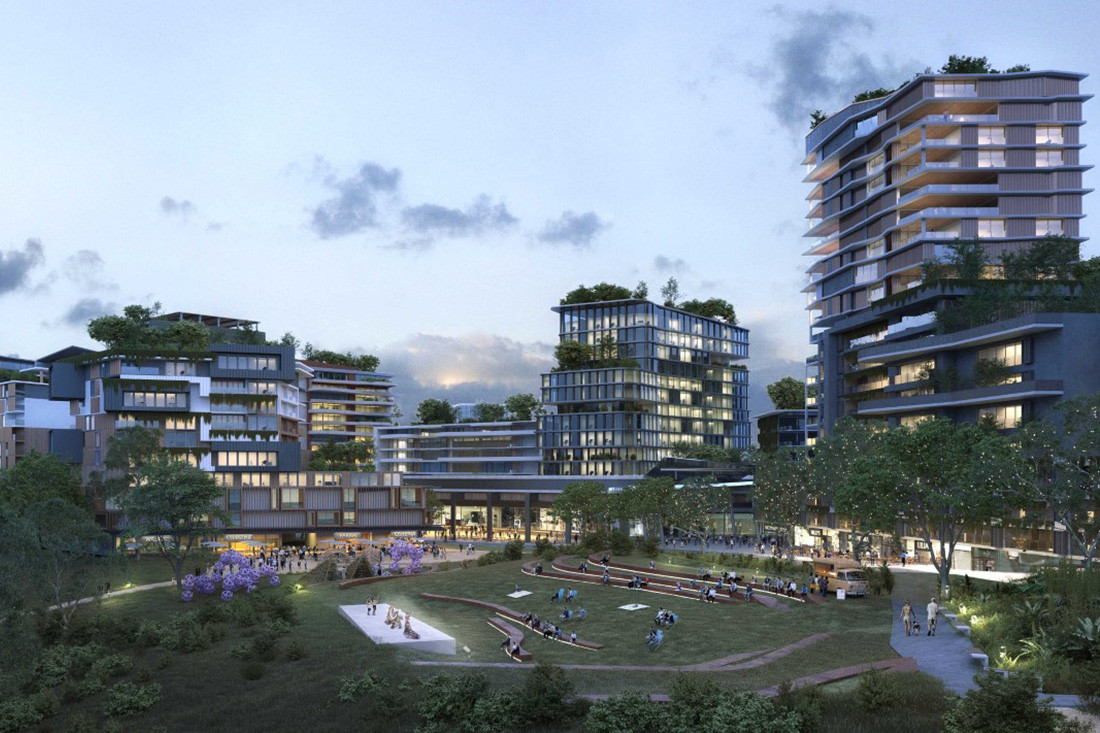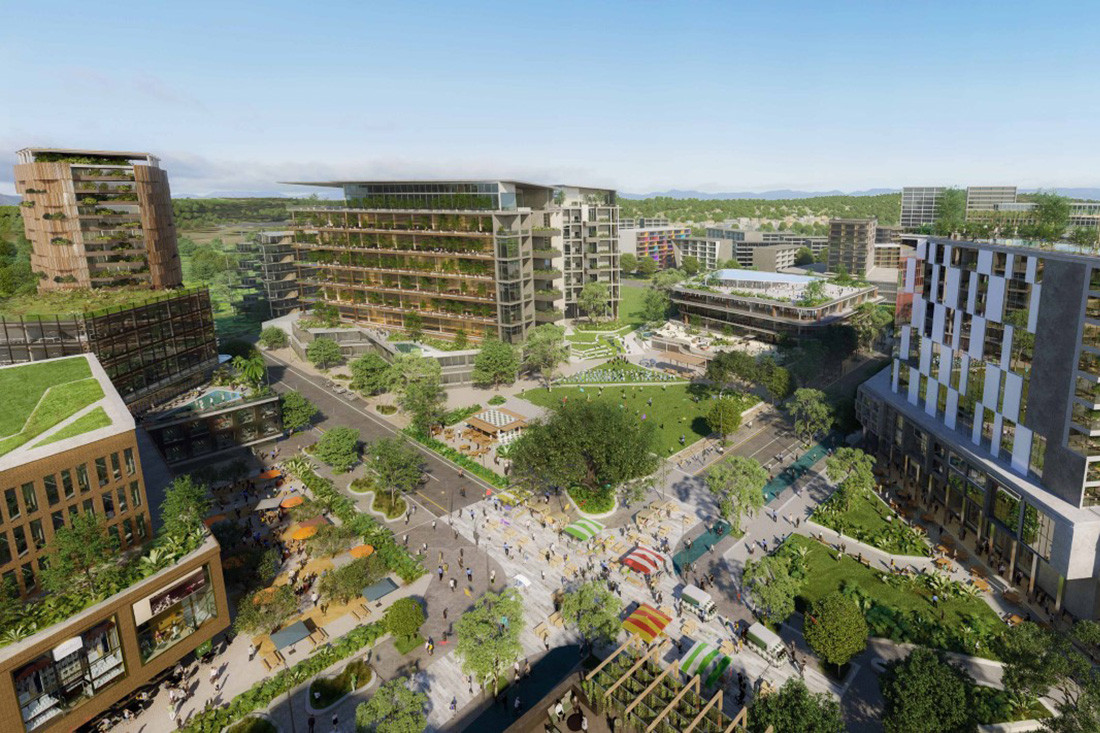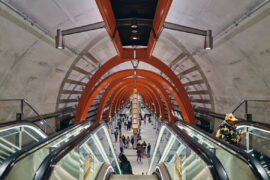Hatch RobertsDay’s Craig Christensen says universal and multigenerational housing are on the rise, but there is more work to be done to properly integrate the ageing population.

April 1st, 2021
With an ageing population that continues to grow older and in higher numbers, a move towards a higher frequency of age friendly facilities within residential and public areas is of utmost importance. The aged care debacle aside, governmental bodies and designers are looking to reinvent residential communities into more age-friendly cities that cater for the ageing population, now and in the decades that lay ahead.
While the growth of the Australian population has stagnated in recent past, this will actually boost the size of ageing communities, making the population pyramid problem a high priority issue for urban planners.
Thankfully due to the evolution of over-55 living arrangements, the population pyramid won’t be thrown out of proportion. These sentiments are echoed by Craig Christensen, Hatch RobertsDay’s Queensland principal, who says pre-pandemic projections of population growth have altered slightly, but do not possess a major danger to the pyramid.
“Australia’s immigration shutdown over the last few months will result in 1.1 million fewer people by 2031 than previously forecasted. While this will result in a larger proportion of older Australians, it’s encouraging to see over-55s living rapidly evolving to enable older Australians to live in smaller dwellings while enjoying more integrated and independent lives through accessible and inclusive housing, amenities, infrastructure and support.
“In fact, over 55s living has evolved to the point that it has become an attractive model for Australia’s population overall. There is a nexus between the housing needs of an individual working from home and those looking to scale back their careers, and emerging trends help people downsize successfully while still living a full life. This is as much about housing as to how we design our neighbourhoods – maintaining a house is expensive and demanding.”

Christensen says the catalyst for these trends is to do with a push amongst community developers and providers to make universal housing requirements — that are cheaper than retrofitting — mandatory for new builds and extensions. Over 30 organisations recently signed a letter to Prime Minister Scott Morrison urging new accessibility standards in the national construction code.
“[Building a house to] Universal Housing makes your dwelling attractive to a much wider market and the largest demographic cohort. There is also growing awareness of the need to design more age-friendly cities, to better meet the needs of older members of our community, and that is steadily becoming reflected in policy and planning.”
Universal Housing design could provide major assistance to the health industry, but continues to be met with backlash.
“Universal design is encouraged and has growing awareness but is not mandated, nor are its benefits widely known in the community. Given demographic trends this should be at the forefront of our thinking. Disability advocates are calling for universal standards to be mandatory for new builds, however this has been deterred by the Housing Industry Association,” he says.
“Unfortunately, it has meant that there is a shortage of options to meet the needs of our diverse population. There is a common misconception that using universal housing design is more costly. In reality, it can save the Australian health system up to $54 million per annum. If universal housing design was mandatory, or at least widely encouraged, houses would be readily equipped with features that aren’t noticeable to many, but necessary for our disabled and ageing populations. Features such as strengthening the walls of showers and introducing wider doors and corridors, have minor impact on costs and appeal to a wider audience.”
With apartment buildings and mixed-use developments on the up in metropolitan areas, it is becoming increasingly important for local councils to be aware of over-55s in these areas and catering for their needs, through the means of street furniture. With Clover Moore and City of Sydney council looking to replace its current street furniture with more modern solutions over the next few years, Christensen says he’d be surprised if the new pieces didn’t cater for seniors in the community.
“It is likely that City of Sydney is considering the diversity of users when updating its furniture, including introducing more age-friendly furniture as part of its overhaul. If it hasn’t already, the council should consider a number of updates, including introducing an open back at bus stops to assist those in wheelchairs.
“Introducing more furniture such as benches at regular intervals will be helpful for the older community and considering shaded amenities and ensuring tree canopy cover in streets is also important. This will assist older Australians move around more independently.”

Christensen has shared seven trends that will better integrate ageing Australians into their communities, that include the likes of the increase of multigenerational housing in Australia and urban gardens.
1. Mixed-use developments and apartment buildings
Integrating over-55s housing more closely with the rest of the community will help older Australians avoid isolation and loneliness, and maintain their independence longer. An emerging trend is the incorporation of over-55s and aged-care living in major mixed-use master planned communities. For instance, a land parcel in the mixed-use Murdoch Health and Knowledge Precinct in Perth is being developed into aged care facilities, a Medihotel, residential, commercial, medical and office facilities. The new Ripley Town Centre in the master planned community south-west of Brisbane is designed to include residential lots, retail space, an underground train station, hospitality venues, community spaces and a hospital, senior living and aged care. “Expect to also see the development of new buildings where a few floors are dedicated to over-55s living,” Craig says.
2. Multigenerational housing
Research reveals one in five Australians live in a multigenerational household, and 583,440 properties in Sydney, Melbourne and Brisbane alone could build an additional self-contained unit of at least 60sqm. Expect to see a growing trend whereby grandparents move into a granny flat or tiny house on their property – or a self-contained floor of the main house – while kids move into the main house with their families.
3. Universal housing design
Research reveals that 83 per cent of Australians over 60 want to live and age in their own homes. Building more ‘livable’ housing – with the inclusion of more accessible doorways and stairs, grab rails and step-free entrances – could reduce the need for care and can promote greater independence in older Australians. If 20 percent of new homes in Australia included universal housing design, the Australian health system could save up to $54 million per annum. Craig predicts that we will see better residential designs that meet the needs of people during all life stages, but which particularly helps the older population ‘age in place.’
4. Aged living above shopping centres or in CBDs
Mobility is an important part of over-55s living, as it helps them live independently while integrating with the local community. Craig says: “We expect to see an emerging trend whereby retirement units are built above shopping centres, enabling residents to mingle with the community and have much of their needs met without help while ensuring the shops remain busy during off-peak times. We will also see over-55s living in CBD and central areas, allowing residents to be within easy walking distance to theatres, major shopping precincts, high-quality restaurants, and a plethora of health facilities.
5. The rise of urban gardens
Expect to see further growth in the number of urban community gardens. These are mentally and physically beneficial for older residents who live in garden-free housing, and enables them to teach gardening and horticulture to younger generations. Research shows that 58 per cent of Australians experience an improvement in their mood when gardening and studies have found that spending time in natural surroundings can decrease anxiety and lower cortisol levels, thus reducing stress. Christensen says the evolution of urban gardens is very much a natural one and has plenty to do with an ageing population.
“Urban gardens are becoming more popular as we become more health conscious, desiring local fresh food, an experience and connection to what we eat and a desire for more sustainable and self-sufficient lifestyles. Connecting older Australians and their interests and talents is becoming more common through urban gardening and through things likes men’s shed and community workshops.”
6. Age-friendly precincts
Craig predicts a growth in age-agnostic infrastructure, amenities and services in local communities. Some examples are public transport that is more accessible, widespread street furniture for pausing and resting and public facilities (especially toilets), parklets and piazzas, and levelled, shaded and wider footpaths, which can encourage older Australians to leave their homes and feel safe to mingle in their community. An example is the 2020-2024 Age-Friendly City Plan in Canberra, which will eliminate barriers for over-65s looking to stay active, socially connected to the community and access health services easier.
7. Age-friendly businesses
While many town and neighbourhood centres are seeing revitalisation, the abundance of youth-focused retail and entertainment is missing the opportunity to serve one of our biggest markets, older Australians. For example, we can encourage food and beverage venues to undertake fit-outs that reduce reflected noise and provide comfortable seating, or entertainment venues that are accessible, themed and programmed for older tastes.

Craig Christensen
For more information regarding the trends, head to robertsday.com.au.
INDESIGN is on instagram
Follow @indesignlive
A searchable and comprehensive guide for specifying leading products and their suppliers
Keep up to date with the latest and greatest from our industry BFF's!

Now cooking and entertaining from his minimalist home kitchen designed around Gaggenau’s refined performance, Chef Wu brings professional craft into a calm and well-composed setting.

For a closer look behind the creative process, watch this video interview with Sebastian Nash, where he explores the making of King Living’s textile range – from fibre choices to design intent.

Seven years in the making, the new Surry Hills Village is here with doors open and crowds gathering.

‘Come Together’ takes a global view of multigenerational design, an increasingly popular phenomenon with some especially notable examples in Australia.
The internet never sleeps! Here's the stuff you might have missed

A collaboration between Hassell, Weston Williamson + Partners (WW+P Architects) and Rogers Stirk Harbour + Partners (RSHP) sees the opening of five new underground stations.

SHAU’s Kampung Mrican revitalisation transforms community life through social architecture, local collaboration and sustainable design.